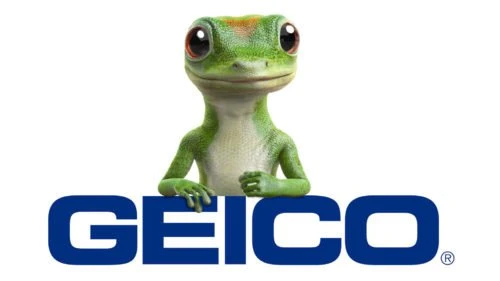How Can Auto Insurance Be Made More Affordable For Low-income Drivers?
Solutions for Affordable Auto Insurance
- Implement usage-based pricing models. With the advancements in technology, insurance companies can now track driving behavior and offer personalized insurance rates based on actual usage. Low-income drivers who have a safe driving record and use their vehicles less frequently could be rewarded with lower premiums. This approach promotes fairness and affordability by aligning the cost of insurance with individual driving habits.
- Establish state-run or subsidized auto insurance programs specifically aimed at low-income drivers. Similar to Medicaid or other social assistance programs, these insurance initiatives would provide essential coverage at reduced rates or with government subsidies. This would ensure that all drivers, regardless of income level, have access to the necessary coverage while relieving the financial burden on low-income individuals.
- Promote competition among insurance providers. Encouraging new players to enter the market, implementing regulations to prevent price-fixing, and fostering transparency in pricing and coverage can help drive down premiums. This would allow low-income drivers to choose from a range of affordable and competitive insurance plans tailored to their specific needs and budgets.
Strategies for Low-Income Driver Coverage
- The implementation of income-based pricing. Insurance companies can consider a driver's income level when determining their premiums, offering reduced rates or tailored payment plans that are more affordable for those with lower incomes. This approach takes into account the drivers' financial circumstances, making coverage feasible for low-income individuals and families.
- Collaborate with community organizations and nonprofits to provide education and resources on affordable insurance options for low-income drivers. This can include workshops, seminars, or online resources that help individuals understand their coverage needs, navigate the insurance market, and find the most cost-effective policies. By empowering low-income drivers with knowledge, they can make informed decisions and obtain suitable coverage within their budget.
- Advocate for state or federal policies that address the specific insurance needs of low-income drivers This could involve lobbying for reforms such as expanding government assistance programs, implementing regulations that limit insurance rate hikes, or creating specialized insurance programs for low-income individuals. By pushing for policy changes, there is a better chance of creating a more inclusive and affordable insurance landscape for this demographic.
Initiatives for Affordable Auto Insurance
- Promote financial literacy and education regarding insurance among low-income drivers. Many individuals may not fully understand the factors that affect their insurance premiums or how to navigate the insurance market effectively. By providing information and resources on topics such as coverage options, discounts, and how to compare quotes, low-income drivers can make informed decisions and find the most affordable policies that meet their needs.
- Encourage insurance companies to offer flexible payment options for low-income drivers. Many insurance providers require upfront payment for the full premium, which can be challenging for individuals on a tight budget. By allowing installment payments or offering pay-as-you-go options, insurers can make coverage more financially manageable for low-income drivers. Additionally, exploring partnerships with financial institutions or community organizations to provide accessible financing solutions for insurance payments can further alleviate the financial burden.
- Implementing government subsidies or tax credits for low-income drivers can be a significant initiative to make auto insurance more affordable. Similar to other social assistance programs, these initiatives can provide direct financial support to eligible individuals, reducing the cost of their insurance premiums. By addressing the economic barriers faced by low-income drivers, these initiatives can ensure that everyone has access to essential auto insurance coverage without compromising their financial well-being.

Making Auto Insurance Accessible
- Simplify the insurance application and enrollment process. This includes streamlining paperwork and documentation requirements, reducing unnecessary bureaucracy, and providing clear and easy-to-understand instructions. By eliminating barriers to entry, more low-income drivers can navigate the insurance system and obtain the coverage they need.
- Create partnerships with government agencies, community organizations, and insurers to establish insurance enrollment centers in underserved areas. These centers can serve as one-stop shops where individuals can receive assistance in understanding their insurance options, comparing quotes, and completing the application process. By bringing these services closer to the communities that need them the most, access to auto insurance becomes more convenient and equitable.
- Promote awareness about the consequences of driving without insurance. Many low-income drivers may choose to forgo insurance due to financial constraints, but it exposes them to legal penalties and financial risks. By raising public awareness about the importance of insurance and the potential consequences of being uninsured, more drivers can be encouraged to seek and maintain the necessary coverage.
Options for Affordable Auto Insurance
- Consider opting for minimum liability coverage instead of comprehensive coverage. While comprehensive coverage offers more extensive protection, it also tends to come with higher premiums. By opting for minimum liability coverage, low-income drivers can meet the legal requirements while keeping their insurance costs down.
- Explore state-specific or government-backed insurance programs. Some states offer programs that provide auto insurance at reduced rates for low-income individuals. These programs are often income-based and can provide the necessary coverage at a more affordable price point.
- Consider bundling their auto insurance with other policies, such as renter's or homeowner's insurance. Many insurance companies offer discounts for bundling policies, which can help lower the overall cost of insurance for low-income drivers.
- Compare quotes from multiple insurance providers. Rates can vary significantly among different companies, so it's important to shop around and find the most affordable option. Online comparison tools or working with an independent insurance agent can make the process easier and more efficient.
Obtaining Affordable Auto Insurance
- Maintain a clean driving record. Many insurance companies offer discounts to drivers who have a history of safe driving. By avoiding accidents and traffic violations, low-income drivers can qualify for lower premiums.
- Consider raising the deductible on the insurance policy. The deductible is the amount the policyholder will pay out-of-pocket before the insurance coverage kicks in. Increasing the deductible can help lower monthly premiums, making the insurance more affordable for low-income individuals. However, it's important to ensure that the chosen deductible amount is still feasible to pay in case of an accident or damage.
- Taking advantage of available discounts is also crucial. Many insurers offer discounts to low-income drivers, such as discounts for completing defensive driving courses, being a member of certain organizations, or having safety features installed in the vehicle. By actively seeking out and applying for relevant discounts, drivers can significantly reduce their insurance costs while maintaining adequate coverage.
- It is equally important to review the insurance policy annually and compare quotes from different insurance providers. Insurance rates can fluctuate, so it is prudent to shop around regularly to ensure the best possible price. Comparing quotes allows individuals to assess the competitiveness of their current insurance provider and potentially switch to a more affordable alternative.

All Info You Need To Know About Car Insurance
Unlocking the Road to Car Insurance Knowledge: Your Ultimate Guide to Coverage, Premiums, and Savings! Learn all the insider tips on finding the perfect policy, making hassle-free claims, and scoring fabulous discounts, all while safeguarding your precious wheels. Get ready to hit the road with confidence!

Why Kaiser Permanente is a good choice for auto insurance?
Discover why Kaiser Permanente stands out as an excellent choice for auto insurance with comprehensive coverage options and top-rated customer service.

How to find the best auto insurance company in US?
Discover the top tips for finding the best auto insurance company in the US and secure optimal coverage for your vehicle.

Geico Car Insurance Review for 2024
Discover the latest insights on Geico car insurance for 2024, including coverage options, customer satisfaction, and what sets them apart in the competitive insurance market.

What Will Self-driving Cars Influence The Future Of Auto Insurance
Discover how self-driving cars are set to revolutionize the future of auto insurance. Uncover the exciting possibilities and potential changes that this technology will bring, ensuring you stay ahead in an ever-evolving automotive landscape.